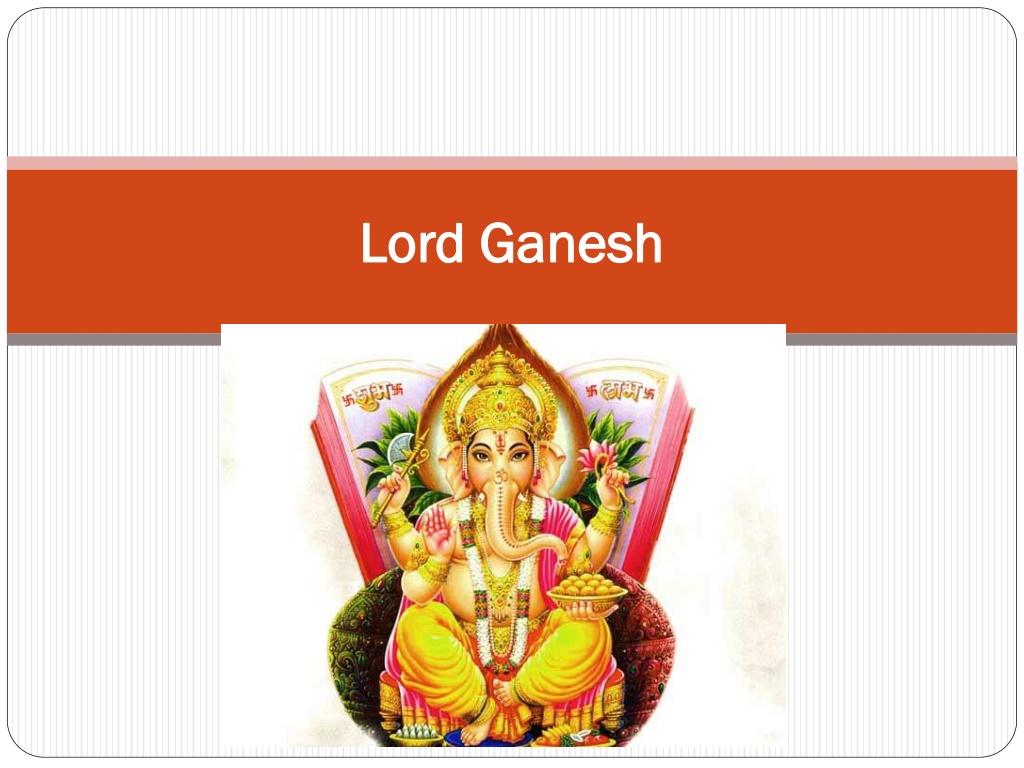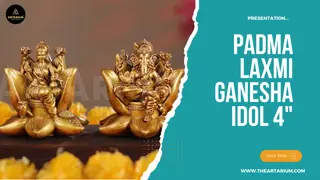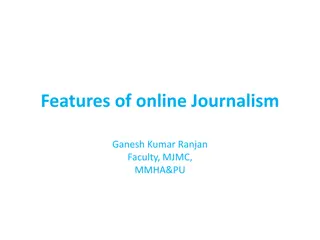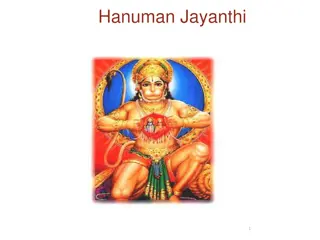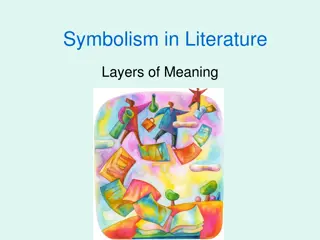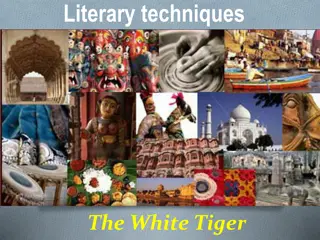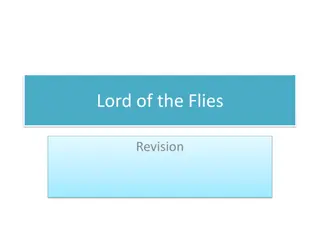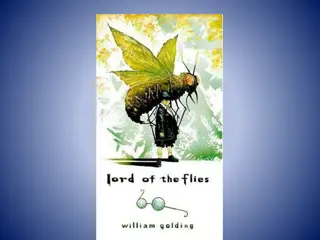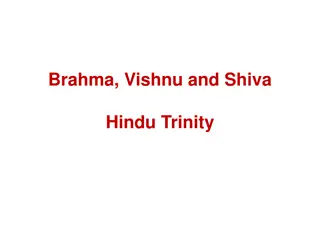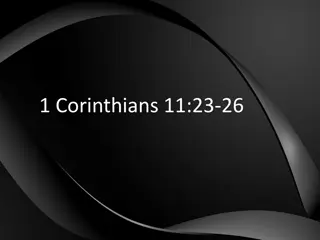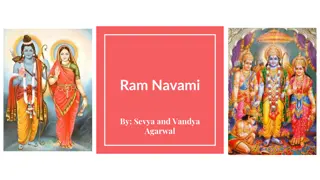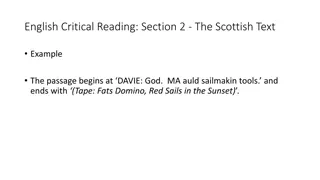Insights on Lord Ganesh: Symbolism and Significance
Lord Ganesh, the remover of obstacles, holds significant attributes like his elephant face, one tusk, protruding belly, and more. Learn about the rituals, prayers, and festivals dedicated to this revered deity.
Download Presentation

Please find below an Image/Link to download the presentation.
The content on the website is provided AS IS for your information and personal use only. It may not be sold, licensed, or shared on other websites without obtaining consent from the author.If you encounter any issues during the download, it is possible that the publisher has removed the file from their server.
You are allowed to download the files provided on this website for personal or commercial use, subject to the condition that they are used lawfully. All files are the property of their respective owners.
The content on the website is provided AS IS for your information and personal use only. It may not be sold, licensed, or shared on other websites without obtaining consent from the author.
E N D
Presentation Transcript
Lord Lord Ganesh Ganesh
Lord Ganesh Remover of Obstacles At the beginning of any ritual and ceremony, Lord Ganesh is prayed first. His blessings are invoked always in the beginning. Ganesh is widely revered as the Remover of Obstacles and more generally as Lord of Beginnings and Lord of Obstacles (Vighnesha). Ganesh is the lord of intellect and wisdom.
Prayer on Lord Ganesh "Vakratunda Mahaakaaya Suryakotee SamaPrabha Nirvighnam kuru mey Deva Sarva kaaryeshu Sarvadaa" Meaning O Lord Ganesh who has a large body, curved trunk and brightness of a million suns, please remove all obstacles in my work always.
Ganesh Chaturthi File:Ganesh mimarjanam EDITED.jpg An annual festival honors Ganesh for ten days, starting on Ganesh Chaturthi, which typically falls in late August or early September. The festival begins with people bringing in clay idols of Ganesh, symbolising Ganesh's visit. The festival culminates on the day of Ananta Chaturdashi, when idols (murti) of Ganesh are immersed in the most convenient body of water, while the people shout "Ganapati Bappa Morya" (Ganesh come back soon next year). Devotees offer Ganesh sweets such as modak and small sweet balls (laddus). He is often shown carrying a bowl of sweets, called a modakap tra.
About Lord Ganesh Lord Ganesh is the son of Lord Shiva and Parvati. The family includes his brother War lord Karthikeya. Most believe Lord Ganesh is not married. Others associate him with the concepts of Buddhi (intellect), Siddhi (spiritual power), and Riddhi (prosperity).
Attributes of Lord Ganesh Elephant Face: Gajanana means having the face of an elephant. The elephant head denotes wisdom and its trunk represents Om, the sound symbol of cosmic reality. One Tusk and other broken: Ganesh's earliest name was Ekadanta (One Tusked), referring to his single whole tusk, the other having been broken off. The broken tusk that Ganesh holds like a pen in his lower right hand is a symbol of sacrifice, which he broke for writing the Mahabharata. Protruding Belly: : Lambodara (Pot Belly, or, literally, Hanging Belly) and Mahodara (Great Belly) are other names of Lord Ganesh. Four arms: In his upper right hand Ganesh holds a goad, which helps him propel mankind forward on the eternal path and remove obstacles from the way. The noose in Ganesh's left hand is a gentle implement to capture all difficulties. Mouse as Vehicle: Ganesh is often shown riding on or attended by a mouse. The mouse is interpreted in several ways. According to some, mouse symbolizes those who wish to overcome desires and be less selfish.And he is humble enough to ride the lowest of creatures, a mouse. The laddoo (sweet): He holds in his trunk indicates that one must discover the sweetness of the Atman. Fan-like Ears: His fan-like ears convey that he is all ears to our petition. Snake Around his Waist: The snake that runs round his waist represents energy in all forms.
Stories on Lord Ganesh How Lord Ganesh Got His Head Once goddess Parvati, while bathing, created a boy out of the dirt of her body and assigned him the task of guarding the entrance to her bathroom. When Shiva, her husband returned, he was surprised to find a stranger denying him access, and struck off the boy's head in rage. Parvati broke down in utter grief and to soothe her, Shiva sent out his squad (gana) to fetch the head of any sleeping being who was facing the north. The company found a sleeping elephant and brought back its severed head, which was then attached to the body of the boy. Shiva restored its life and made him the leader (pati) of his troops. Hence his name 'Ganapati'. Shiva also bestowed a boon that people would worship him and invoke his name before undertaking any venture. Who is Elder? Ganesh and His brother Lord Subramanya (Kartikya) once had a dispute as to who was the elder of the two. The matter was referred to Lord Shiva for final decision. Shiva decided that whoever would make a tour of the whole world and come back first to the starting point had the right to be the elder. Subramanya flew off at once on his vehicle, the peacock, to make a circuit of the world. But the wise Ganesha went, in loving worshipfulness, around His divine parents and asked for the prize of His victory. Lord Shiva said, "Beloved and wise Ganesh! But how can I give you the prize; you did not go around the world?" Ganesh replied, "No, but I have gone around my parents. My parents represent the entire manifested universe!" Thus the dispute was settled in favour of Lord Ganesh, who was thereafter acknowledged as the elder of the two brothers. Mother Parvati also gave Him a fruit as a prize for this victory.
History behind Celebration of Ganesh Chaturthi In 1893, LokmanyaTilak transformed this annual Ganesh festival from private family celebrations into a grand public event. He did so "to bridge the gap between the Brahmins and the non-Brahmins and find an appropriate context in which to build a new grassroots unity between them" in his nationalistic strivings against the British in Maharashtra. Because of Ganesh's wide appeal as "the god for Everyman", Tilak chose him as a rallying point for Indian protest against British rule. Tilak was the first to install large public images of Ganesh in pavilions, and he established the practice of submerging all the public images on the tenth day. Today, Hindus across India celebrate the Ganapati festival with great fervour, though it is most popular in the state of Maharashtra. The festival also assumes huge proportions in Mumbai, Pune, and in the surrounding belt of Ashtavinayaka temples.
